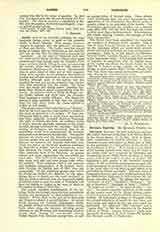

Carissimi, Giacomo, the most influential and prolific Italian composer of his time, b. in 1604 at Marino in the Papal States; d. January 12, 1674, in Rome. After completing his musical education in Rome, Carissimi became choirmaster at Assisi, and, in 1628, he was appointed to a like position at the church of St. Apollinaris in Rome. He is considered the father of the modern oratorio form, which had its origin in the simple laudi sacri composed by Palestrina and Annimuccia for St. Philip Neri’s meetings of young people, held in his oratorio or place of prayer. By imparting a lyric quality to the recitative, lending variety to the orchestral accompaniments and dramatic movement to the whole, he developed this form to the point where it was taken up and carried to its perfection by Handel and Bach. Although many of Carissimi’s oratorios and other works have been lost, the Bibliotheque Nationale in Paris contains the following oratorios in MS.: “La plainte des damnes”, “L’histoire de Job“, “Ezechias“, “Baltazar”, “David et Jonathan“, “Abraham et Isaac”, “Jephte“, “Le jugement dernier”, “Le ‘mauvais riche”, “Jonas”. An almost complete collection of the works of this master made by Dr. Henry Aldrich (1647-1710) is found in the library of Christ Church College, Oxford. Of Carissimi’s settings to liturgical texts two printed collections of motets for two, three, and four voices, and masses for five and nine voices are mentioned. An eight-part “Nisi Dominus” and a “Laude Sion” in MS. are preserved in the Santini Library in Rome. Among Carissimi’s pupils were Alessandro Scarlatti, J. K. Kern, Johann Ph. Krieger, Chr. Bernard, and M. A. Charpentier.
JOSEPH OTTEN

